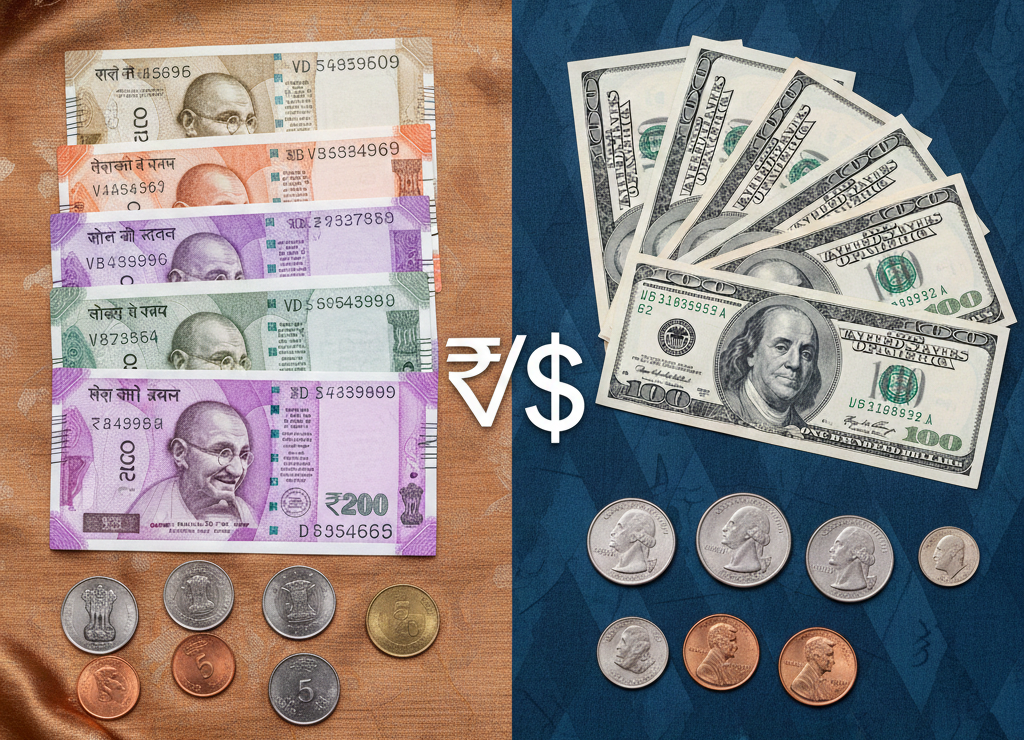In today’s financial world, the Bond Market has become an essential part of the global financial system as it provides a platform for Governments, Corporations, and Institutions to secure funding. In this expansive marketplace, different entities issue and trade bonds, which are debt securities symbolizing loans from investors to issuers.
Investors earn interest income and get capital appreciation from the bond market, while issuers use it to finance operations and projects or manage existing debt. With diverse participants and the impact of economic trends, the bond market significantly influences the broader financial environment and investment strategies.
Currently Bond Market in India is growing significantly providing various avenues for investors to diversify their portfolios. If you’re new to bonds or looking to invest, it’s important to grasp their importance, the different types, and how the market functions. This blog will help you through the fundamentals and explain the process of investing in bonds in India.
What are Bonds?
Bonds are financial instruments issued by governments, municipalities, corporations, and other entities to raise capital for various needs. Companies issue bonds, in order to borrow money from investors. Bonds are characterized by fixed interest rates, set maturity dates, and a defined face value. Investors who buy bonds become creditors of the issuer and are entitled to receive regular interest payments, along with the return of the principal amount when the bond matures.
What is the Bond Market?
The bond market is a marketplace where bonds are traded. It operates in a decentralized manner, involving various participants such as individual investors, institutional investors, and financial institutions who buy and sell bonds.
In India, the bond market allows issuers to raise capital, offering investors opportunities to diversify their portfolios and earn income through interest payments. The Bond market is influenced by factors like credit ratings, rate of interest, conditions of the economy, and investor sentiment.
There are two types of bond markets:
a. Primary Market
In the primary bond market in India, issuers raise capital by selling bonds directly to investors through public offerings or private placements. These transactions establish the initial price and terms of the bonds.
b. Secondary Market
The secondary bond market in India allows investors to trade bonds initially issued in the primary market. These bonds can be bought and sold on various platforms, including stock exchanges.
Key Terminologies in the Bond Market
1. Par Value/ Face Value
Par value, or face value, is the bond’s basic denomination. It determines the amount on which the bond’s interest is calculated and is typically the principal repaid to the investor when the bond reaches maturity.
2. Coupon
The coupon represents the annual interest rate a bond pays. It may vary depending on the frequency of compounding, which could be monthly, quarterly, half-yearly, or annually. In the case of floating-rate bonds, the coupon rate may change periodically.
3. Floating Rate
Floating rate refers to the term “floating Interest rate” where interest rate changes at regular intervals, often quarterly. It happens because of the inflation rates linked to the consumer price index.
4. Yield to Maturity
Yield to Maturity is a term that measures the amount that will be given to the investor if they hold it until maturity.
5. Maturity
Maturity is when the bond reaches its expiration date, and the principal is repaid to the bondholder. Most bonds pay the full amount either as a lump sum (bullet payment) or in installments, except perpetual bonds.
6. Perpetual Bonds
Perpetual bonds, often issued by banks and financial institutions, are part of Tier-1 capital under Basel 3 regulations. Though labeled “perpetual,” these bonds often come with a call option, allowing the issuer to return the money to the investor, typically every 5 years in India.
7. Call and Put Options
Call and put options are linked to bonds similarly to how they function in derivatives markets. A call option allows the issuer to repay the bond early, while a put option gives the bondholder the right to demand repayment.
8. Credit Rating
Credit ratings assess the borrower’s ability to repay the bond. AAA is the highest rating, indicating the safest investment, while D signifies default. Government bonds are considered safe for domestic borrowing.
9. Spread
The spread is the difference in interest or yield between a government bond and other rated bonds. Bonds with lower ratings usually offer higher interest rates to compensate for the higher risk.
Various Types of Bonds for Investment in India
1. Government Bonds
Government Bonds are issued by the Government of India or State Government in order to fund human welfare projects and fiscal deficits. As these Bonds are backed by the Government itself, makes them extremely safe in regards to risk level. However, the coupon rates are often lower compared to the returns from higher-risk investments like corporate bonds. Example – G -Secs (Government Securities) and T – Bills (Treasury bills).
2. Corporate Bonds
Companies issue bonds to raise funds, offering higher returns than government bonds, but with a greater risk of default. The risk associated with corporate bonds largely depends on the issuing company’s creditworthiness and reputation. Credit rating agencies evaluate companies and assign ratings that reflect the probability of timely interest payments and repayment of the principal. Example – Secured Bonds, Unsecured Bonds, etc.
3. Municipal Bonds
A municipal bond is a type of bond issued by a local government or municipality to raise money for public infrastructure projects. The returns on these bonds are paid from sources like property taxes, professional taxes, or revenue from specific projects. These Bonds are favorable for investors who want to support local infrastructure with tax benefits.
4. Tax–Free Bonds
Tax – free Bonds are issued by the Government of India, in which the interest amount earned on the Bond investment remains free from taxes. The risk involved in these Bonds is mainly low as they are mostly issued by the PSUs (Public Sector Undertakings). Examples – NHAI (National Highways Authority of INDIA), PFC (Power Finance Corporation), and IRFC (Indian Railway Finance Corporation).
5. Sovereign Gold Bonds
Sovereign Gold Bonds (SGBs), issued by the Government of India, are linked to gold prices and offer a fixed interest rate, along with the potential for profit if gold prices increase. Since they are backed by the government, these bonds come with low to moderate risk and are a great option for investors looking for a safer alternative to physical gold investments.
6. Inflation Indexed Bonds
Inflation-linked bonds offer returns that are adjusted for inflation, helping to protect investors from rising inflation. Backed by the government, they carry low risk and are well-suited for those aiming to preserve their purchasing power.
7. Perpetual Bonds
Perpetual bonds have no set maturity date, providing ongoing interest payments until the issuer decides to call them. They carry higher risk than standard bonds, as they are typically issued by banks and financial institutions. These bonds are best suited for investors looking for long-term income and willing to accept a higher level of risk.
8. Zero–Coupon Bonds
Zero-coupon bonds are issued at a discount and do not pay regular interest, but they are redeemed at face value upon maturity. They carry moderate risk, as they don’t provide periodic income but offer capital appreciation. These bonds are ideal for investors seeking long-term capital gains.
9. Convertible Bonds
Convertible bonds can be transformed into equity shares of the issuing company after a specified period. They carry moderate to high risk, combining the safety of bonds with the growth potential of equities. These bonds are suitable for investors looking for flexibility between debt and equity investments.
10. Non-Convertible Debentures (NCDs)
NCDs are issued by companies to raise capital from the public, offering a fixed interest rate without the option to convert into equity shares. They can be secured, meaning they are backed by the company’s assets, or unsecured, which presents a higher risk. NCDs have a specified maturity period, during which investors receive regular interest payments.
Benefits of Investing in the Bonds
- Fixed Income – Bonds provide a fixed income, making them appealing to investors who want a reliable and consistent source of income to meet various financial obligations, such as loan EMIs.
- Diversification – Bonds are an effective means to diversify an investment portfolio, as they typically have low correlations with stocks and other asset classes.
- Lesser Risk– Bonds are generally viewed as less risky than stocks, particularly government bonds, which are supported by the government.
- Capital Preservation – Bonds can assist in preserving capital, especially when held to maturity, as they ensure the return of the principal amount.
- Inflation protected – Some bonds, such as inflation-linked bonds, provide returns that are adjusted for inflation, which helps preserve purchasing power.
- Tax–free Interest – Certain bonds, like municipal bonds, may offer tax-free interest income based on your tax circumstances.
- Predictable returns – Bonds usually provide a fixed rate of return, which simplifies planning for future expenses and financial objectives.
- Liquidity – Many bonds are actively traded, offering liquidity and the option to sell them in the secondary market when necessary.
Why RBI is conducting a major Government Securities Buyback Auction in October 2024?
The Central Government has announced that it will buy back up to ₹25,000 crore worth of government securities through an auction organized by the Reserve Bank of India (RBI) on October 17th, 2024. The RBI, which manages the government’s debt, will hold an auction where banks and other market players can repurchase five different government securities. One of these bonds matures in January 2026, while the other four will mature in May, June, September, and November 2025.
The bonds up for buyback include a 7.72% bond maturing on May 25, 2025; a 5.22% bond maturing on June 15, 2025; an 8.20% bond maturing on September 24, 2025; a 5.15% bond maturing on November 9, 2025; and a 7.59% bond maturing on January 11, 2026.
The RBI restarted these buyback auctions on May 9 after a six-year break and has since held five auctions, including those on May 16, May 21, May 30, June 6, and October 10. The most recent auction on October 10 was particularly successful, marking one of the best buybacks since the RBI resumed this process.
Final Thoughts
In summary, India’s bond market is a lively and swiftly changing part of the country’s financial ecosystem. With its significant size, strong growth trends, and a variety of investment options, the bond market offers great potential for investors looking for income, diversification, and capital preservation. As the market continues to grow and develop, investors should keep up with market changes, evaluate their investment goals and risk tolerance, and think about adding bonds to their portfolios to take advantage of the opportunities available in India’s dynamic bond market.
Sources: economictimes








